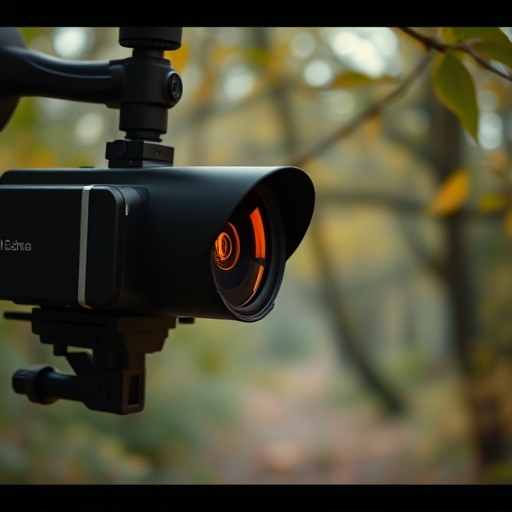Hidden cameras offer homeowners a powerful tool for home security without compromising aesthetics. By integrating cameras into everyday objects like decorative bookends or weather-resistant lighting, and strategically placing them for maximum visibility while remaining undetectable, homeowners can deter intruders and monitor activities remotely. Compliance with local laws and ethical considerations regarding privacy are crucial when deploying hidden camera systems for effective yet legal home monitoring.
Uncover the art of strategic hidden camera placement for enhanced home security with our comprehensive guide. Explore the fine line between privacy and protection, learning key considerations for discreet recording equipment. From innovative strategies to hide cameras around your house to understanding legal and ethical boundaries, this article equips you with all you need to know about deploying hidden cameras for effective home monitoring.
- Understanding Hidden Camera Placement for Home Security
- Key Considerations for Discreet Recording Equipment Placement
- Effective Strategies to Hide Cameras Around the House
- Legal and Ethical Guidelines for Using Hidden Cameras in Homes
Understanding Hidden Camera Placement for Home Security
Hidden camera placement is a strategic art in home security, allowing homeowners to protect their spaces while maintaining an unobtrusive appearance. When implementing hidden cameras for home monitoring, consider integrating them into everyday objects or decor to avoid drawing attention. For instance, placing a camera inside a decorative bookend or using a weather-resistant camera disguised as outdoor lighting can be effective strategies.
These discreet devices offer peace of mind by enabling remote viewing and recording, ensuring potential intruders are deterred. The key is to choose placement that provides clear visuals without compromising aesthetics. By combining functionality with camouflage, homeowners can create an impenetrable defense for their properties, making it easier to monitor activities and safeguard valuable assets.
Key Considerations for Discreet Recording Equipment Placement
When planning the discreet placement of recording equipment, such as hidden cameras for home monitoring, several key considerations come into play. The primary goal is to install the devices in a way that ensures maximum visibility and coverage while remaining virtually undetectable. This involves understanding the environment you’re monitoring—its layout, potential blind spots, and areas where privacy concerns are paramount. For instance, placing hidden cameras behind objects or within everyday items can be an effective strategy to capture unawares moments without raising suspicion.
Lighting is another crucial element in covert recording. Minimizing shadows and ensuring even illumination can help the equipment capture clear, high-quality footage. Utilizing natural light or strategically placed artificial lighting can make the cameras less noticeable while enhancing their operational effectiveness. Additionally, understanding local laws and regulations regarding hidden surveillance is essential to ensure compliance and maintain the legality of your monitoring efforts.
Effective Strategies to Hide Cameras Around the House
Hiding cameras around your home can be an effective strategy for home monitoring, but it requires careful consideration to ensure discreteness and effectiveness. One proven method is to utilize everyday objects as cover. For instance, placing a camera inside a fake rock or potted plant blends it seamlessly into the decor, making it less conspicuous. Another tactic is to install cameras within ceiling fans or light fixtures, taking advantage of their natural placement high on walls or ceilings. These strategies not only hide the cameras but also make them less likely to be discovered by potential intruders.
For added concealment, consider using wireless cameras and power-over-Ethernet (PoE) adapters to run cables discreetly. PoE cameras can be placed in hard-to-see areas like behind pictures or mirrors, where they capture clear footage without drawing attention. Additionally, ensuring the cameras have night vision capabilities allows for round-the-clock monitoring without compromising visibility in low-light conditions. By combining these techniques, you can create a comprehensive hidden camera system that supports home monitoring while maintaining an unintrusive presence.
Legal and Ethical Guidelines for Using Hidden Cameras in Homes
When considering hidden camera placement for home monitoring, it’s crucial to balance effective surveillance with strict adherence to legal and ethical guidelines. The use of hidden cameras in homes is regulated by both federal and state laws, which vary significantly across jurisdictions. In general, these laws dictate the type of equipment allowed, areas where cameras can be installed, and the rights of homeowners and residents regarding privacy. For instance, many regions prohibit the installation of cameras in areas where there’s a reasonable expectation of privacy, such as bathrooms or bedrooms.
Using hidden cameras for home monitoring raises ethical concerns related to consent, transparency, and potential misuse of recorded footage. Homeowners should ensure that all parties who might be captured on camera are aware of its presence and have given their consent. Moreover, the recordings should only be used for the intended purpose, such as home security or property monitoring, and not shared or accessed without legitimate reasons. Ethical considerations also require regular review and maintenance of the system to prevent unauthorized use or access.
Hidden cameras have emerged as powerful tools for enhancing home security, offering a sense of peace of mind for homeowners. By understanding the art of discreet placement, you can maximize their effectiveness. This guide has provided strategic insights into selecting ideal locations, navigating legal boundaries, and ensuring ethical use of hidden cameras for comprehensive home monitoring. With these tips in hand, you’re now equipped to create a robust security system tailored to your needs.
